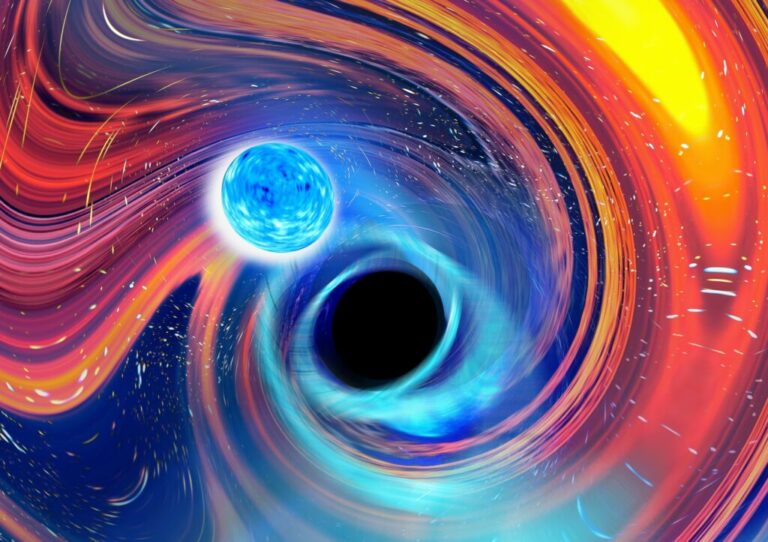A Neutron Star Collided with a Remarkably Small Black Hole.
Just like neutrons stars, and black holes, have common origin, as remainders of stars previously born, that have completed their lifespan. The initial stellar core collapse started by gravitation is balancing the thermonuclear pressure in low mass stars, like the Sun.
With more massive stars, the core collapes, finally causing either a neutron star or a black hole found depending on the initial mass of the progenitor star. During all this time, the star goes through matter compression till it reaches an explosive supernova in this rapid process.
In the fourth LIGO-Virgo-KAGRA network observational period just this past May, gravitational waves were detected coming from a fusion event, which occurred when a body that has the mass equal to 1.2 Suns merged with another more massive body.
Follow-up analysis revealed that the object likely was some kind of a neutron star which belonged to the group of less massive black holes that are in this category of ‘mass gap’ (which is heavier than the most massive neutron star known and lighter than the lightest black hole).
The phenomenon of gravitational waves may involve different objects that interact with each other. Optically, the difference was that in the past, X-ray experiments served as the primary technique for discovering stellar mass black holes, while radio devices were mostly used for neutron star detections. On the other hand, there never existed any such objects at this rate as there are simply not enough objects weighing between six and ten luminous masses.
This vast vacuum has provoked many scientists to question the validity of the existence of this missing region, which is evident from the occurrence of an object within this range being discovered surruptitiously.
Usually, the binary gap used to be a crucial boundary between a neutron star and a black hole, and the objects residing with this range were scarce at all. Yet a previously uncharted black holes area is producing gravitational waves that may imply that maybe objects in the range of this mass are not that uncommon.
Achieving the task of detecting large objects lying off the main mass of the distant end or of their merger is one of the primary issues in the detectors as the sensitivity of the detectors is also involved in the process. The researchers at LIGO who belong at the University of British Columbia are very busy striving for and narrowing the pain points in mirror coatings that will be beneficial for further LIGO detectors inventions.
The innovation doesn’t only address the optical equipment, as the infrastructure is also being changed incorporating the software to improve the data analysis, as well. The increase of sensibility in the total environment of the gravity wave network should be able to give us highly significant readings of data in the near future observations.
Yet, for now, the first half of the observing run has to be processed and there remain 80 more viable candidates signals that need to be analyzed.
Source : New gravitational wave signal helps fill the ‘mass gap’ between neutron stars and black holes
Do not forget to share your opinion with us to provide you with the best posts !




0 Comments